Introduction
In an era where the global population is steadily rising and environmental concerns are paramount, agriculture faces the challenge of producing more food with fewer resources. Precision agriculture, often referred to as precision farming or smart farming, has emerged as a transformative solution. This article explores precision agriculture techniques and their role in increasing efficiency in modern farming.
In a world marked by a steadily increasing global population and growing environmental concerns, the agriculture industry finds itself at a crossroads. The challenge is clear: how can we produce more food to feed a growing population while simultaneously mitigating the environmental impact of agriculture? Precision agriculture, often referred to as precision farming or smart farming, has emerged as a transformative solution to address these pressing issues. This article delves into the world of precision agriculture techniques and their pivotal role in revolutionizing modern farming practices, ultimately leading to increased efficiency, sustainability, and food security.
Precision agriculture harnesses the power of technology and data-driven insights to optimize every facet of the farming process. From the field to the farmstead, this approach employs a combination of cutting-edge technologies, such as GPS-guided tractors, remote sensing, drones, and advanced data analytics, to make farming more precise and efficient than ever before.
One of the key principles of precision agriculture is the notion of variability within fields. Instead of treating an entire field uniformly, modern farmers use technology to recognize and respond to variations in soil quality, nutrient levels, moisture content, and pest pressures. By doing so, they can tailor their farming practices, such as irrigation, fertilization, and pest management, to the specific needs of different areas within a field. This not only conserves valuable resources but also optimizes yields, ensuring that crops thrive in the most conducive conditions.
The integration of data analytics and real-time monitoring is another game-changer in precision agriculture. Farmers can collect vast amounts of data from sensors, satellites, and even ground-based robots. This data is then analyzed to make informed decisions about when and where to plant, irrigate, apply fertilizers, and harvest. By leveraging these insights, farmers can fine-tune their operations, minimize waste, and maximize crop yields.
Furthermore, precision agriculture contributes significantly to sustainability efforts. With precise application of resources and reduced use of water, fertilizers, and pesticides, the environmental impact of farming is minimized. This not only conserves natural resources but also helps reduce greenhouse gas emissions, making agriculture more eco-friendly.
The adoption of precision agriculture isn’t limited to large industrial farms; it’s also accessible to small-scale and family-owned farms. The democratization of these technologies allows farmers of all sizes to benefit from increased efficiency and sustainability.
In conclusion, precision agriculture stands as a beacon of hope in the face of the pressing challenges of feeding a growing global population while preserving our environment. By harnessing the power of technology, data analytics, and tailored farming practices, precision agriculture is reshaping the future of farming. It offers the promise of increased efficiency, sustainability, and food security, demonstrating that innovation and data-driven insights can lead the way towards a more prosperous and environmentally conscious agricultural landscape.
Looking for more insights? You’ll find them right here in our extended coverage: What is Precision Agriculture and How is Technology Enabling it?
Precision agriculture is a data-driven approach to farming that utilizes technology, data analytics, and information management to optimize various aspects of the agricultural process. The primary goal is to enhance crop yields, reduce input costs, and minimize environmental impact by making data-informed decisions at every stage of farming.
Precision agriculture, often referred to as precision farming or smart farming, represents a transformative shift in the agricultural industry. It harnesses the power of technology, data analytics, and information management to usher in a new era of farming practices that are more efficient, sustainable, and environmentally responsible. At its core, precision agriculture is about using data-driven insights to revolutionize how we grow and manage crops.
Data as the Cornerstone: Precision agriculture places data at the heart of farming operations. Sensors, drones, satellites, and other technologies gather an unprecedented amount of data on various aspects of the farm, including soil conditions, weather patterns, crop health, and equipment performance. This wealth of data serves as the foundation for making informed decisions.
Optimizing Resource Allocation: One of the primary objectives of precision agriculture is to optimize resource allocation. By analyzing data on soil composition, nutrient levels, and moisture content, farmers can tailor their fertilizer, irrigation, and pesticide applications to specific areas of their fields. This targeted approach reduces input costs and minimizes waste, resulting in more sustainable farming practices.
Enhancing Crop Yields: Precision agriculture enables farmers to maximize crop yields. By fine-tuning planting depths, seed spacing, and crop rotation based on data-driven recommendations, farmers can achieve healthier, more robust crops. Yield variability within fields is reduced, ensuring a more consistent and profitable harvest.
Environmental Stewardship: The use of data-driven decisions in precision agriculture promotes environmental stewardship. By minimizing the use of fertilizers and pesticides, farmers can reduce the risk of soil and water pollution. Efficient irrigation practices also conserve water resources, contributing to sustainability efforts.
Real-Time Monitoring: Precision agriculture offers real-time monitoring of field conditions. Farmers can track crop growth, detect pest infestations, and respond to weather events with agility. This proactive approach allows for timely interventions that can prevent crop loss and optimize resource use.
Data Integration: Integrating data from various sources is a hallmark of precision agriculture. Farmers can combine data from soil tests, weather forecasts, equipment sensors, and historical yield records to create comprehensive models of their farms. These models facilitate decision-making, helping farmers adjust their strategies in response to changing conditions.
Economic Viability: Precision agriculture contributes to the economic viability of farming operations. By reducing input costs, improving crop yields, and minimizing risks, it helps farmers maintain profitability in an increasingly competitive agricultural landscape.
Accessibility and Scalability: Advances in technology have made precision agriculture more accessible to a broader range of farmers. The scalability of these technologies means that both small-scale and large-scale agricultural operations can benefit from data-driven insights and precision farming practices.
In conclusion, precision agriculture is not just a farming technique; it’s a revolution in how we approach agriculture. By leveraging technology and data analytics, farmers are becoming more efficient, sustainable, and environmentally responsible. The shift towards precision agriculture represents a significant step forward in our quest to feed a growing global population while minimizing the impact on our planet’s resources.
Looking for more insights? You’ll find them right here in our extended coverage: Potential Payoffs of Precision Farming
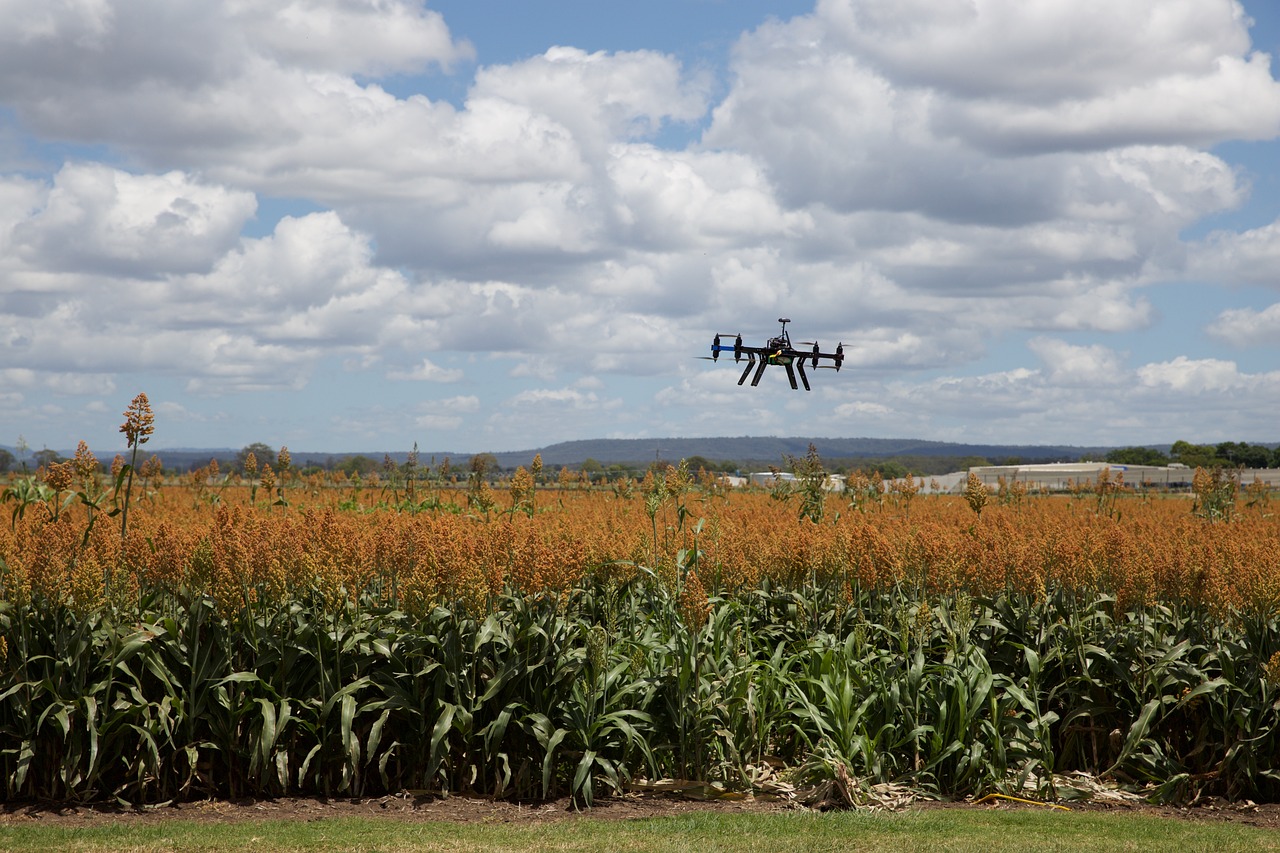
One of the cornerstones of precision agriculture is the use of satellite imagery and Global Positioning System (GPS) technology. These tools provide farmers with precise information about their fields, including soil variations, moisture levels, and plant health. This data allows for customized treatment of different sections of a field, optimizing resource allocation.
Precision agriculture stands as a testament to the remarkable fusion of cutting-edge technology and age-old farming practices. Among its foundational elements, the utilization of satellite imagery and Global Positioning System (GPS) technology emerges as a game-changer for modern agriculture.
In the contemporary farming landscape, satellite imagery has evolved into a powerful tool that grants farmers an unprecedented level of insight into their fields. With satellites orbiting high above the Earth, farmers can obtain a bird’s-eye view of their entire agricultural operation. This vantage point captures vital information such as soil variations, moisture levels, and the health of crops down to the individual plant level.
The integration of GPS technology further enhances precision agriculture’s capabilities. GPS-equipped tractors, combines, and other farming machinery can navigate fields with pinpoint accuracy. This precision not only optimizes the use of fuel and resources but also reduces the potential for human error. Farmers can create highly precise maps of their fields, detailing variations in soil types and crop health. Armed with this knowledge, they can tailor their approach to different sections of the field, applying the right amount of water, fertilizer, or pesticides exactly where needed.
The benefits of precision agriculture are manifold. It leads to more sustainable farming practices by minimizing the overuse of resources and reducing the environmental impact of agriculture. By maximizing resource efficiency, it can also lead to cost savings for farmers, ultimately boosting their profitability.
Additionally, precision agriculture is a key player in addressing the global food challenge. With the world’s population steadily increasing, farmers are under greater pressure to produce more food while using fewer resources. Precision agriculture helps bridge this gap by enabling farmers to produce higher yields with less input, thus contributing to global food security.
As technology continues to advance, the potential for precision agriculture knows no bounds. Artificial intelligence and machine learning are being integrated into the field, allowing for even more data-driven decision-making. Drones equipped with advanced sensors are taking precision agriculture to new heights, quite literally, by providing high-resolution aerial imagery and rapid data collection.
In conclusion, precision agriculture, with its reliance on satellite imagery and GPS technology, is transforming farming into a data-driven, highly efficient endeavor. It empowers farmers with the knowledge and tools they need to make informed decisions, minimize waste, and increase productivity. As agriculture faces the challenges of the 21st century, precision agriculture is at the forefront, guiding the way towards a more sustainable and food-secure future.
If you’d like to dive deeper into this subject, there’s more to discover on this page: Smart Farming: Internet of Things (IoT)-Based Sustainable Agriculture

VRT enables the application of fertilizers, pesticides, and irrigation water at variable rates across a field, rather than using a uniform approach. By tailoring inputs to specific areas, farmers can address the unique needs of each section, reducing waste and improving efficiency.
Variable Rate Technology (VRT) stands as a groundbreaking approach in precision agriculture, revolutionizing the way farmers manage their resources. This technology not only reduces waste but also enhances overall agricultural sustainability in several key ways:
Minimizing Environmental Impact: VRT allows farmers to apply fertilizers, pesticides, and water precisely where they are needed, sparing untouched areas from unnecessary exposure to chemicals. This targeted approach significantly reduces the environmental impact of agriculture, preventing the runoff of excess chemicals into nearby waterways and preserving soil health.
Enhancing Crop Quality: By addressing the unique needs of different sections of a field, VRT can lead to improved crop quality. For example, it can help ensure that certain crops receive optimal nutrients, resulting in healthier and more robust plants. This can translate into higher market prices and increased profitability for farmers.
Resilience in Changing Conditions: Weather patterns and soil conditions can vary widely across a single field. VRT allows farmers to adapt quickly to these changing circumstances. For instance, during periods of drought, VRT can direct irrigation precisely to the most water-stressed areas, preserving water resources and crop health.
Cost Reduction: Through VRT, farmers can optimize their use of expensive inputs such as fertilizers and pesticides. By reducing over-application, they not only save on input costs but also reduce the risk of soil and groundwater contamination. This cost-effective approach contributes to the long-term sustainability of farming operations.
Data-Driven Decision-Making: VRT relies heavily on data analysis and real-time information from sensors and satellite imagery. This encourages farmers to adopt a more data-driven approach to their operations. The insights gained from VRT can lead to continuous improvements in farming practices, promoting efficiency and productivity.
Precision in Organic Farming: VRT is not limited to conventional farming practices. It can also be applied to organic farming, where precise nutrient and pest management are crucial. Organic farmers can use VRT to optimize their use of organic inputs, ensuring that they are applied where they will have the greatest impact.
Global Food Security: In a world with a growing population and changing climate, VRT can contribute significantly to global food security. By maximizing crop yields while minimizing resource use, VRT helps ensure a more sustainable and resilient food supply.
In conclusion, Variable Rate Technology represents a game-changing tool in modern agriculture. Its ability to tailor inputs to the specific needs of different sections of a field not only increases efficiency and profitability but also promotes environmentally friendly and sustainable farming practices. As technology continues to advance, VRT will likely play an even more crucial role in meeting the world’s food needs while minimizing the environmental footprint of agriculture.
Looking for more insights? You’ll find them right here in our extended coverage: Precision nitrogen management in rainfed durum wheat cultivation …

Advanced data analytics and machine learning algorithms analyze data from various sources, such as weather forecasts, historical crop data, and real-time sensor readings. This enables predictive modeling and decision support systems that help farmers make informed choices about planting, harvesting, and resource allocation.
Advanced data analytics and machine learning have ushered in a new era of precision agriculture, revolutionizing the way farmers manage their operations. These cutting-edge technologies go beyond traditional farming practices by harnessing the power of data from diverse sources. Weather forecasts, historical crop data, and real-time sensor readings converge to form a comprehensive and dynamic information ecosystem.
In this data-rich landscape, predictive modeling becomes a game-changer. By analyzing historical patterns and current conditions, these models can forecast everything from crop yields to disease outbreaks with remarkable accuracy. Farmers are no longer dependent solely on experience and intuition; they have data-driven insights at their fingertips.
But the impact goes well beyond just predicting outcomes. Decision support systems, powered by machine learning algorithms, provide farmers with actionable recommendations. These systems offer guidance on when to plant, harvest, irrigate, or apply pesticides, optimizing resource allocation and reducing waste. It’s a transformation that not only improves crop yields but also enhances sustainability by minimizing the use of water, chemicals, and energy.
Furthermore, the benefits of these technologies extend beyond individual farms. When aggregated, data from numerous farms can be used to identify broader trends and patterns. This macro-level view aids in understanding regional or even global agricultural trends, helping governments, organizations, and policymakers make informed decisions about food security, trade, and environmental conservation.
The synergy of data analytics and machine learning is fostering a new era of agriculture—one that’s smarter, more efficient, and environmentally conscious. It empowers farmers with the knowledge to adapt to changing conditions, manage risks, and increase their resilience in the face of climate change. As these technologies continue to evolve, we can anticipate even greater advancements in agriculture, ensuring a more sustainable and secure food supply for our growing global population.
For additional details, consider exploring the related content available here Precision agriculture using IoT data analytics and machine learning …

Internet of Things (IoT) devices and sensors play a pivotal role in precision agriculture. These devices monitor conditions in the field, including temperature, humidity, soil moisture, and pest presence. Real-time data from sensors helps farmers respond promptly to changing conditions and optimize their operations.
In the realm of modern agriculture, the integration of Internet of Things (IoT) devices and sensors has ushered in a transformative era known as precision agriculture. These advanced technologies have become indispensable tools for farmers, revolutionizing the way they manage their fields and make critical decisions.
The beauty of IoT devices lies in their ability to continuously monitor the conditions in the field with unprecedented precision. Temperature sensors, for instance, provide minute-by-minute updates on the thermal environment, helping farmers safeguard crops from extreme heat or cold. Humidity sensors track moisture levels in the air, which is vital for preventing diseases and ensuring optimal growing conditions. Soil moisture sensors delve beneath the surface, offering insights into the hydration status of the soil, allowing farmers to fine-tune their irrigation practices with unmatched accuracy.
Moreover, IoT devices don’t stop at climate and soil conditions; they extend their reach to pest management. With sensors that can detect the presence of specific pests or insects, farmers can swiftly respond to potential threats before they escalate into full-blown infestations. This proactive approach reduces the need for excessive pesticide use, benefiting both the environment and crop yields.
Real-time data collected by these IoT devices is a game-changer for farmers. It empowers them to make data-driven decisions with speed and precision. For example, if soil moisture levels drop below a certain threshold, irrigation systems can be automatically activated, conserving water and ensuring crops receive just the right amount of hydration. When temperature fluctuations threaten crops, alerts can be sent directly to a farmer’s smartphone, enabling them to take immediate action to protect their harvest.
The benefits of precision agriculture go beyond immediate responses to field conditions. Over time, the data collected by IoT devices allows farmers to identify trends and patterns, helping them optimize their long-term strategies. This might involve adjusting planting schedules, optimizing fertilization plans, or fine-tuning pest management strategies based on historical data.
In essence, IoT devices and sensors have ushered in a new era of agriculture, one where data-driven decision-making, efficiency, and sustainability take center stage. Farmers armed with real-time information can adapt and thrive in an ever-changing agricultural landscape, ultimately leading to increased productivity and the more sustainable use of our precious natural resources. As the Internet of Things continues to evolve, its role in precision agriculture promises to be an enduring and transformative force for the future of farming.
Additionally, you can find further information on this topic by visiting this page: Agriculture’s technology future: How connectivity can yield new …
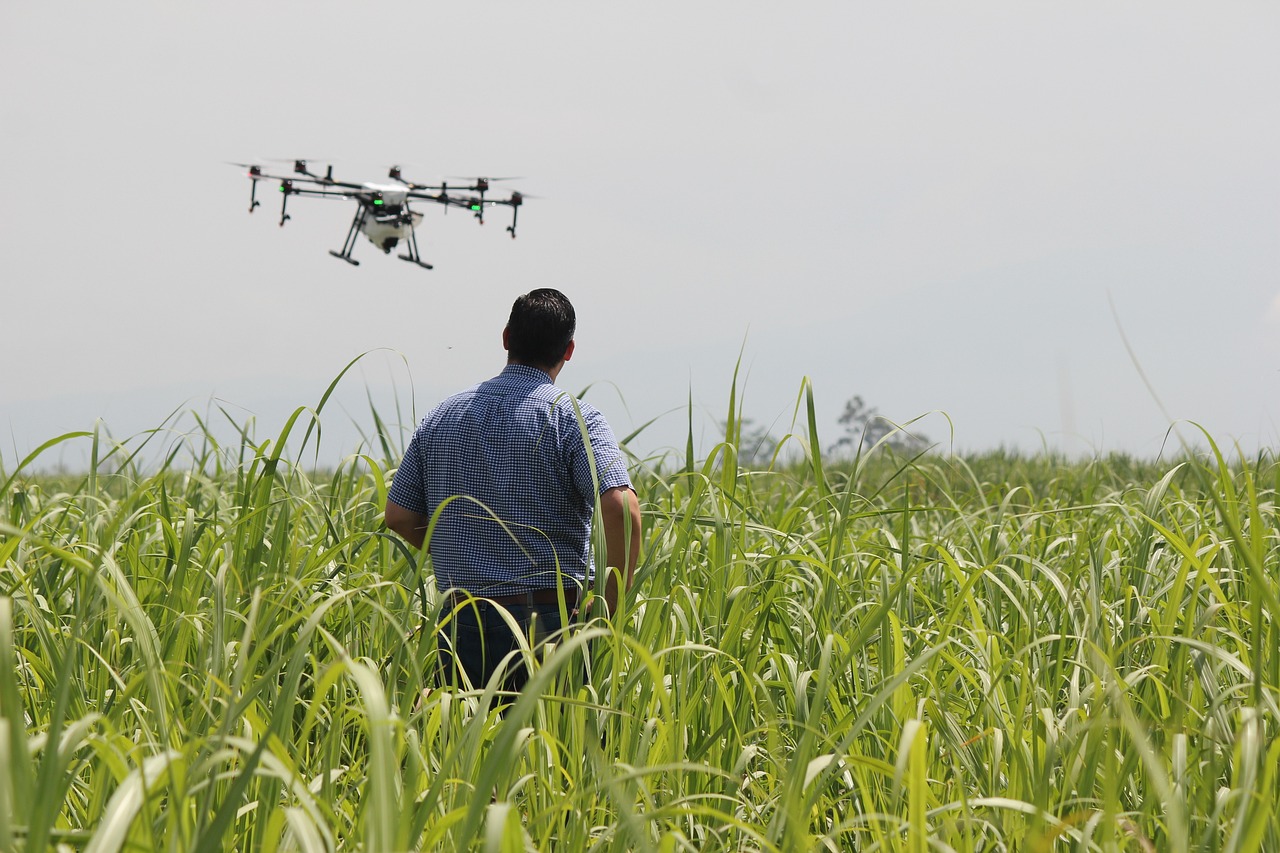
Precision agriculture utilizes automated machinery equipped with GPS-guided systems. These machines can perform tasks such as planting, harvesting, and weed control with high accuracy. Autonomous tractors and drones are also used for monitoring and maintaining crops.
Precision agriculture represents a remarkable technological leap in the world of farming, revolutionizing the way we cultivate crops and manage agricultural processes. At its core, precision agriculture harnesses the power of automation and advanced technology to optimize every facet of farming, from planting and harvesting to weed control and crop monitoring.
One of the pivotal advancements in precision agriculture is the use of automated machinery equipped with GPS-guided systems. These modern marvels are transforming the landscape of agriculture by offering unparalleled accuracy and efficiency in farming tasks. When it comes to planting, these machines ensure that seeds are sown with pinpoint precision, optimizing spacing and depth to maximize crop yield. During harvest, the precision is equally remarkable, as automated harvesters can selectively pick ripe produce with minimal waste. Such precision not only boosts crop productivity but also conserves resources, reducing the environmental impact of farming.
Weed control, a perennial challenge in agriculture, has also seen significant improvements through precision agriculture. Automated machinery can precisely target and eliminate weeds, minimizing the need for chemical herbicides and reducing the risk of harming crops. This not only benefits crop health but also contributes to sustainable farming practices.
Beyond ground-based automation, precision agriculture leverages autonomous tractors and drones to monitor and maintain crops from the air. Drones equipped with high-resolution cameras and sensors can provide real-time data on crop health, moisture levels, and pest infestations. This information allows farmers to make data-driven decisions, addressing issues promptly and preventing potential losses. Autonomous tractors, on the other hand, can navigate fields with unparalleled precision, reducing soil compaction and minimizing the environmental impact of farming operations.
Moreover, precision agriculture isn’t limited to just crop management; it extends to resource optimization as well. By carefully monitoring soil conditions and weather patterns, farmers can tailor their irrigation and fertilization processes to suit the specific needs of their crops. This not only conserves water and reduces the use of fertilizers but also enhances overall crop health and yields.
In essence, precision agriculture represents a transformative paradigm shift in the way we approach farming. By seamlessly integrating automation, GPS technology, and data-driven decision-making, it not only increases efficiency and productivity but also promotes sustainability and environmental stewardship. As the world faces the challenges of feeding a growing population while preserving our planet’s resources, precision agriculture emerges as a beacon of hope, offering a path toward a more sustainable and prosperous future for agriculture.
If you’d like to dive deeper into this subject, there’s more to discover on this page: The Impact of Automated Farming on the Agriculture Industry – Plug …
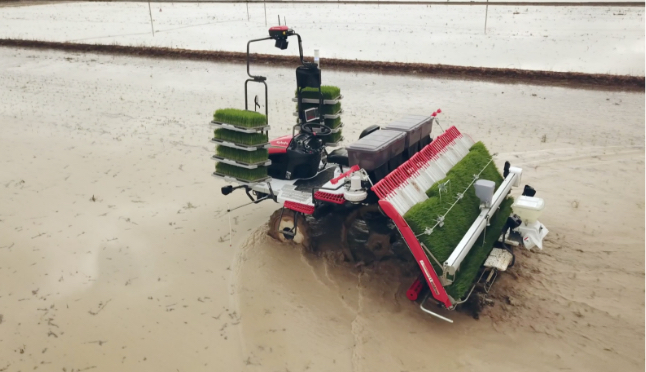
The adoption of precision agriculture techniques brings several significant benefits:
The adoption of precision agriculture techniques brings several significant benefits that revolutionize modern farming practices and contribute to a more sustainable and efficient agricultural sector. These advantages encompass various aspects of farming, from resource management to environmental conservation and economic prosperity:
Resource Efficiency: Precision agriculture optimizes the use of essential resources, such as water, fertilizers, and pesticides. Through precise application based on real-time data, farmers can reduce waste, minimize overuse, and ensure that every input is used efficiently. This not only lowers production costs but also mitigates the environmental impact of agriculture.
Increased Productivity: Precision agriculture enables farmers to monitor crop health, growth, and yield with unparalleled accuracy. By identifying and addressing issues promptly, such as nutrient deficiencies or pest infestations, farmers can maximize crop yields and overall productivity. This translates into greater food production to meet the demands of a growing global population.
Environmental Conservation: Precision agriculture practices minimize the environmental footprint of farming. By reducing the use of harmful chemicals and optimizing resource utilization, it helps mitigate soil erosion, water pollution, and greenhouse gas emissions. It contributes to the preservation of natural habitats and biodiversity, fostering a more sustainable coexistence between agriculture and the environment.
Cost Reduction: The precise management of resources not only conserves them but also reduces production costs. Farmers can save on expenses related to inputs like fuel, labor, and chemicals. This cost-effectiveness enhances the economic viability of farming operations, especially for small-scale and family farms.
Data-Driven Decision-Making: Precision agriculture relies heavily on data collection and analysis. Farmers can make informed decisions based on accurate, real-time information about their crops and fields. This data-driven approach empowers them to adapt to changing conditions, weather patterns, and market demands effectively.
Improved Crop Quality: Precision agriculture techniques contribute to better crop quality by ensuring optimal conditions for growth and minimizing stressors. This, in turn, leads to higher market value for agricultural products. Consumers benefit from access to safer, healthier, and more consistent food.
Enhanced Sustainability: The sustainable practices promoted by precision agriculture not only benefit the environment but also the long-term viability of farming. By maintaining soil health, conserving resources, and reducing waste, these techniques support the continued success of agriculture for future generations.
Risk Reduction: Precision agriculture can help farmers mitigate risks associated with climate variability and extreme weather events. By monitoring and adjusting farming practices in real time, farmers can respond to adverse conditions more effectively, potentially minimizing crop losses and financial setbacks.
Competitiveness: Farmers who adopt precision agriculture techniques often gain a competitive edge in the market. They can produce more efficiently, offer higher-quality products, and adapt to changing consumer preferences and market dynamics, ensuring their place in a competitive agricultural landscape.
In conclusion, precision agriculture represents a transformative shift in farming practices, offering a multitude of advantages that extend beyond individual farms to benefit society, the environment, and the global food supply chain. As technology continues to advance and the agricultural sector embraces innovation, the positive impacts of precision agriculture are likely to expand, making it a cornerstone of modern, sustainable farming.
Don’t stop here; you can continue your exploration by following this link for more details: The Environmental Benefits of Precision Agriculture Quantified
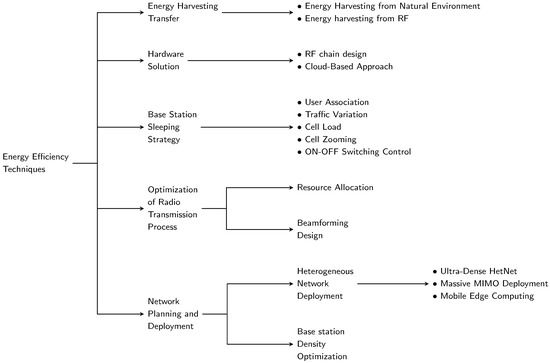
By tailoring inputs to match the specific needs of different parts of a field, farmers can achieve higher crop yields and better quality produce.
Customizing inputs to align with the distinct requirements of various sections within a field represents a transformative approach to modern agriculture. This precision agriculture technique empowers farmers to optimize their crop cultivation on a micro-scale, ultimately resulting in significantly increased crop yields and the production of superior quality produce.
The concept of precision agriculture hinges on the recognition that not all parts of a field are uniform in terms of soil composition, moisture levels, and other critical factors. In the past, farming practices treated entire fields as homogenous units, often leading to inefficiencies and wasted resources. However, by leveraging technology, data analytics, and advanced machinery, farmers can now finely tune their inputs, such as fertilizers, pesticides, and irrigation, to cater to the specific needs of each field section.
One of the pivotal benefits of this approach is the remarkable improvement in crop yields. By providing crops with precisely the right amount of nutrients, water, and protection from pests, farmers can maximize their growth potential. This targeted care ensures that every square foot of land is optimized for productivity, resulting in bountiful harvests that meet the demands of a growing global population.
Quality is another area where precision agriculture shines. By fine-tuning inputs, farmers can enhance the taste, appearance, and nutritional value of their produce. This not only satisfies consumer preferences for high-quality, healthy food but also opens up opportunities for premium pricing, benefiting both farmers and consumers.
Moreover, precision agriculture is an environmentally friendly approach. By minimizing the use of fertilizers and pesticides to only where they are needed, farmers can significantly reduce the environmental impact of agriculture. This approach promotes sustainability by mitigating the risk of over-fertilization, groundwater contamination, and pesticide runoff, thus safeguarding the health of ecosystems and local communities.
The adoption of precision agriculture is also a testament to the evolving role of technology in farming. Advanced tools like GPS-guided tractors, drones, and sensors are now commonplace on modern farms, providing real-time data that enables farmers to make informed decisions. This integration of technology not only boosts efficiency but also attracts a new generation of tech-savvy individuals to the field of agriculture.
In conclusion, the practice of tailoring inputs to the unique needs of different parts of a field is revolutionizing agriculture. It empowers farmers to achieve unprecedented levels of crop productivity, improve produce quality, reduce environmental impact, and harness the potential of cutting-edge technology. As precision agriculture continues to evolve, it holds the promise of not only feeding a growing world population but doing so sustainably and efficiently.
To expand your knowledge on this subject, make sure to read on at this location: Agriculture’s technology future: How connectivity can yield new …
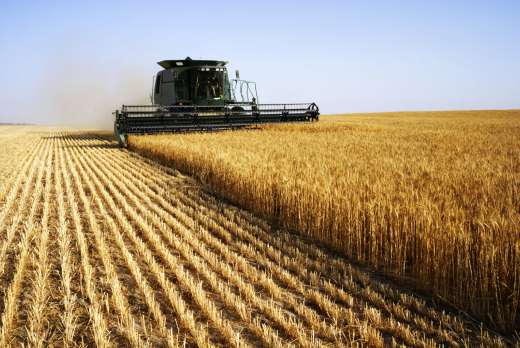
Precision agriculture reduces the overuse of fertilizers, pesticides, and water, leading to cost savings and reduced environmental impact.
Precision agriculture, also known as precision farming, represents a revolutionary approach to modern agriculture that goes beyond just increasing efficiency; it fundamentally transforms the way we cultivate crops and raise livestock. At its core, precision agriculture leverages cutting-edge technologies, data analytics, and scientific insights to optimize every facet of farming operations, ultimately redefining sustainability, resource management, and economic viability in agriculture.
Optimizing Resource Allocation
In the realm of precision agriculture, the benefits extend far beyond the immediate cost savings. By harnessing real-time data from sensors, satellites, and drones, farmers can precisely monitor their fields’ conditions. This level of insight enables them to allocate resources such as water, fertilizers, and pesticides with unprecedented precision. The result is a substantial reduction in resource wastage, which not only saves money but also reduces the environmental footprint of agriculture.
Environmental Conservation and Sustainability
Precision agriculture is a potent tool in addressing the environmental challenges associated with conventional farming practices. By minimizing the overuse of fertilizers and pesticides, it mitigates soil and water pollution, protecting delicate ecosystems and safeguarding biodiversity. Reduced water usage also contributes to conserving this precious resource, which is vital in a world facing increasing water scarcity due to climate change.
Enhancing Crop Yields
While resource optimization is a key pillar of precision agriculture, it doesn’t come at the expense of crop yields; in fact, it often enhances them. By tailoring inputs to the specific needs of each area of a field, farmers can unlock the full potential of their land. This not only boosts productivity but also minimizes the need to convert additional land into agriculture, helping to combat deforestation and preserve natural habitats.
Economic Viability and Long-Term Sustainability
Precision agriculture’s ability to optimize costs while maintaining or even increasing yields enhances the economic viability of farming operations. By reducing input costs, farmers can achieve higher profit margins, fostering economic sustainability in agriculture. This, in turn, helps preserve rural communities and encourages the next generation to engage in farming, ensuring the continuity of food production in an ever-growing global population.
A Global Imperative
Precision agriculture isn’t just a luxury for advanced economies; it’s increasingly recognized as a global imperative. With the world’s population projected to reach 9.7 billion by 2050, the pressure on food production and resource management is intensifying. Precision agriculture offers a scalable solution that can empower farmers worldwide to produce more food with fewer resources and less impact on the environment.
In summary, precision agriculture represents a profound shift in the way we approach farming. By precisely allocating resources, reducing environmental impact, enhancing yields, and ensuring long-term economic sustainability, it not only addresses the pressing challenges of modern agriculture but also aligns with the global goals of environmental conservation and food security. As technology continues to advance, precision agriculture’s potential to reshape the agricultural landscape and promote a more sustainable future becomes even more promising.
Looking for more insights? You’ll find them right here in our extended coverage: Precision Agriculture for Crop and Livestock Farming—Brief Review …
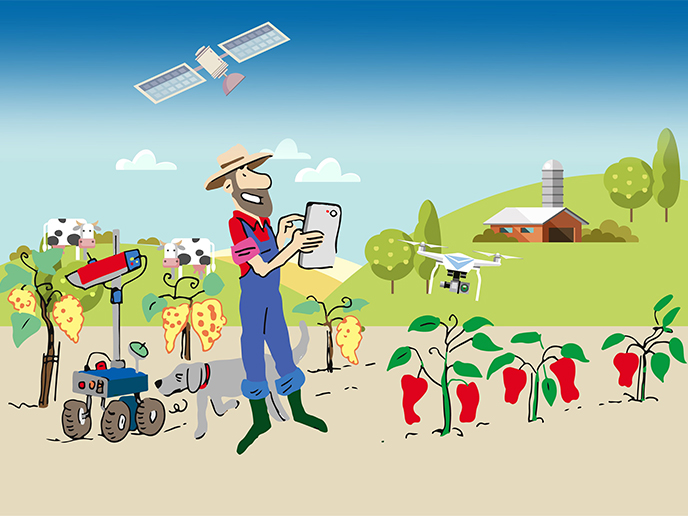
By minimizing the use of chemicals and reducing soil erosion, precision agriculture promotes sustainable farming practices that are less harmful to the environment.
Precision agriculture, often hailed as a game-changer in modern farming, is not only about maximizing yields and profits but also about minimizing the environmental footprint of agriculture. This innovative approach represents a paradigm shift in how we cultivate crops and raise livestock, emphasizing sustainability as a top priority.
One of the key benefits of precision agriculture is its ability to significantly reduce the reliance on chemical inputs. By precisely targeting the application of fertilizers, pesticides, and herbicides, farmers can use these resources more efficiently, minimizing their impact on ecosystems. This reduction in chemical use not only safeguards the health of soil, water, and surrounding wildlife but also reduces the risk of harmful run-off into rivers and streams.
Additionally, precision agriculture addresses the pressing issue of soil erosion, a long-standing challenge in traditional farming practices. Through techniques like no-till farming and controlled traffic systems, farmers can minimize soil disturbance, preventing erosion and preserving valuable topsoil. This not only maintains soil fertility but also reduces sedimentation in water bodies, ensuring cleaner and healthier aquatic environments.
Furthermore, precision agriculture leverages cutting-edge technology, such as satellite imagery, drones, and sensors, to optimize resource allocation. This means that farmers can make informed decisions based on real-time data, leading to more efficient water usage and reduced energy consumption. As a result, not only are farming operations becoming more economically sustainable, but they are also contributing to a reduced carbon footprint.
In a world where the sustainability of agriculture is paramount, precision agriculture offers a beacon of hope. It represents a proactive approach to mitigating the environmental challenges associated with modern farming. By reducing chemical inputs, curbing soil erosion, and embracing technology-driven efficiency, precision agriculture is not just a farming revolution; it’s a promise of a greener, more sustainable future for our planet.
Looking for more insights? You’ll find them right here in our extended coverage: Agriculture Technology

Farmers can make informed decisions based on real-time data, leading to better resource allocation and improved overall management.
The advent of modern technology and data analytics has ushered in a transformative era for farmers, empowering them to make informed decisions that significantly enhance their agricultural practices. This shift towards data-driven agriculture has revolutionized resource allocation and management in several fundamental ways.
First and foremost, the availability of real-time data enables farmers to closely monitor the conditions of their fields and crops. With sensors, drones, and satellite imagery, they can gather precise information about soil moisture, temperature, and nutrient levels. This wealth of data helps farmers make timely decisions on irrigation, fertilization, and pest control. They no longer have to rely solely on intuition or traditional farming calendars; instead, they can adjust their practices on the fly, optimizing crop yields and resource utilization.
Furthermore, data-driven agriculture facilitates more efficient water management. Farmers can implement irrigation systems that respond to real-time weather forecasts and soil conditions, reducing water wastage. This not only conserves a precious resource but also cuts down on operational costs, contributing to the sustainability of farming practices.
The insights derived from data analytics also empower farmers to make smarter choices about crop rotation and planting schedules. By analyzing historical data on crop performance and weather patterns, they can fine-tune their planting strategies to maximize yields and minimize risks. This proactive approach reduces the likelihood of crop failures due to adverse weather conditions.
Precision agriculture, driven by data, has also improved the judicious use of fertilizers and pesticides. Farmers can employ targeted application techniques that minimize environmental impact while maintaining crop health. This not only benefits the environment but also reduces expenses associated with excess chemical usage.
In addition to enhancing resource allocation, data-driven agriculture fosters better financial management. By tracking costs and analyzing returns on investment, farmers can optimize their budgets and make more informed decisions about their farming operations. This financial acumen contributes to the long-term sustainability and profitability of agricultural businesses.
Furthermore, data analytics have opened doors to predictive maintenance for farm equipment. By monitoring the performance of tractors, harvesters, and other machinery in real time, farmers can detect issues before they lead to costly breakdowns. This preventative approach ensures that equipment remains operational during critical periods like planting and harvesting.
In summary, the integration of data and technology in agriculture has empowered farmers to make data-driven decisions that transcend traditional farming practices. Real-time data provides valuable insights into soil and weather conditions, enabling precise resource allocation and efficient management. As technology continues to advance, the future of farming promises even more sophisticated tools and techniques to optimize agricultural processes and contribute to global food security.
To expand your knowledge on this subject, make sure to read on at this location: Enhancing smart farming through the applications of Agriculture 4.0 …
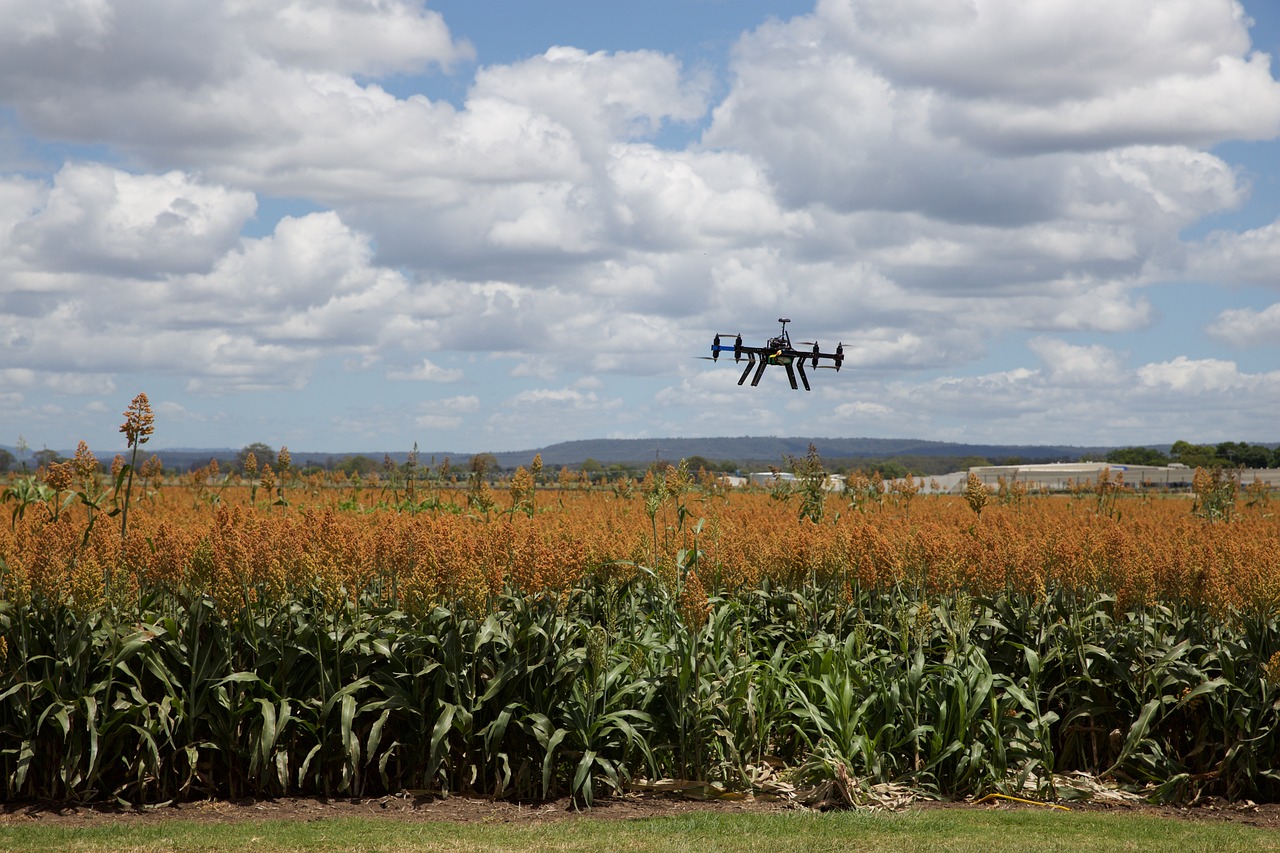
Increased efficiency and higher yields result in improved profitability for farmers.
Increased efficiency and higher yields in agriculture represent a win-win scenario for both farmers and society at large. These outcomes translate into a range of tangible benefits, chief among them being improved profitability for farmers.
Financial Viability: For farmers, profitability is at the core of their livelihoods. The ability to produce more from the same amount of resources or land directly impacts their bottom line. With higher yields and increased efficiency, farmers can expect higher revenues while keeping input costs in check. This financial stability not only ensures their economic well-being but also allows for future investments in sustainable farming practices and equipment.
Cost Reduction: Efficiency gains often mean doing more with less. Farmers can optimize their use of inputs such as water, fertilizers, and pesticides, reducing overall production costs. With precision agriculture techniques and data-driven insights, they can target areas that require intervention, avoiding unnecessary expenditures. As a result, their profit margins improve.
Crop Diversification: Increased profitability can empower farmers to diversify their crops. By having the financial flexibility to explore new crops or varieties, they can adapt to changing market demands and minimize risks associated with monoculture. Crop diversification can also enhance soil health and reduce susceptibility to pests and diseases.
Investment in Sustainable Practices: Profitable farming allows for investments in sustainable and environmentally friendly practices. Farmers can allocate resources to implement conservation methods, adopt organic farming practices, or invest in renewable energy solutions, all of which contribute to long-term sustainability and resilience in agriculture.
Economic Stability: Improved profitability doesn’t just benefit individual farmers; it also contributes to broader economic stability. A thriving agricultural sector creates jobs, supports rural communities, and bolsters the overall economy. Higher farm incomes have a positive ripple effect on related industries, from agribusinesses to food processing and distribution.
Food Security: On a global scale, increased agricultural efficiency and higher yields are pivotal for addressing food security challenges. As the world’s population continues to grow, the ability to produce more food from existing resources becomes paramount. Profitable farming ensures a consistent supply of food, helping to mitigate hunger and food shortages.
Innovation and Research: Enhanced profitability incentivizes investment in research and development. When farmers see tangible returns on innovative techniques and technologies, they are more likely to embrace and fund ongoing research. This cycle of innovation benefits the entire agriculture sector and leads to continuous improvements in farming practices.
Adaptation to Climate Change: Agriculture is increasingly vulnerable to the effects of climate change. Profitable farming provides the means to adapt to these challenges. Farmers can invest in climate-resilient crops, irrigation systems, and soil management practices that help mitigate the impacts of extreme weather events and changing climate patterns.
In essence, increased efficiency and higher yields serve as the foundation of a sustainable and thriving agriculture sector. They empower farmers to achieve financial stability, embrace sustainability, and contribute to global food security. These benefits extend far beyond the farm gate, touching upon economic, environmental, and societal aspects, making agriculture a cornerstone of our shared well-being and future prosperity.
If you’d like to dive deeper into this subject, there’s more to discover on this page: Precision Agriculture Adoption and Profitability | Agricultural …

While precision agriculture holds immense promise, it is not without challenges. Implementation costs, data privacy concerns, and the need for specialized knowledge and equipment are some of the hurdles that farmers may face. However, as technology continues to advance and become more accessible, these challenges are gradually being addressed.
While precision agriculture represents a game-changing approach to modern farming, it’s important to acknowledge that this transformative shift is not without its share of challenges and obstacles. These challenges underscore the complexity of integrating technology and data into traditional agricultural practices.
Implementation Costs: One of the most prominent challenges is the initial cost of implementing precision agriculture technologies. Purchasing and installing equipment such as sensors, GPS systems, and drones can be a significant financial burden for farmers, particularly for those with limited resources or small-scale operations. However, as the demand for these technologies grows and economies of scale come into play, costs are gradually decreasing.
Data Privacy Concerns: The collection and management of vast amounts of agricultural data raise valid concerns about data privacy and security. Farmers must entrust sensitive information, such as crop yields and soil data, to third-party providers and technology companies. Ensuring that this data remains confidential and is used solely for its intended purpose is an ongoing challenge that requires robust privacy safeguards and legislation.
Specialized Knowledge and Training: The successful implementation of precision agriculture requires farmers to acquire specialized knowledge and skills. Understanding how to interpret data, operate complex machinery, and make informed decisions based on data-driven insights can be daunting for those not familiar with technology. Investing in training and education is crucial to bridge this knowledge gap.
Equipment Compatibility: Integrating different precision agriculture technologies can be challenging, especially if they come from various manufacturers or use different data formats. Compatibility issues can hinder the seamless flow of data and reduce the overall effectiveness of the system. Standardization efforts are underway to address this concern.
Data Overload: The sheer volume of data generated by precision agriculture tools can be overwhelming. Farmers may struggle to manage and interpret this influx of information effectively. To make data-driven decisions, they need user-friendly software and analytics tools that distill complex data into actionable insights.
Accessibility: While technology is becoming more accessible, there is still a digital divide in rural areas, where high-speed internet access may be limited. A lack of connectivity can hinder farmers’ ability to fully harness the benefits of precision agriculture. Expanding broadband infrastructure in rural regions remains a priority to address this challenge.
Environmental Concerns: Precision agriculture, if not practiced carefully, can have unintended environmental consequences. Overreliance on certain technologies or misinterpretation of data can lead to excessive fertilizer or pesticide use, potentially harming ecosystems and water quality. Farmers must strike a balance between technology-driven efficiency and environmental stewardship.
Regulatory Framework: The regulatory landscape for precision agriculture is still evolving. Regulations related to data ownership, privacy, and safety standards vary by region and can be complex. Farmers need clear and consistent guidelines to navigate this evolving terrain.
Despite these challenges, there is a strong and growing momentum behind precision agriculture. As technology continues to advance and become more accessible, many of these hurdles are gradually being addressed. Collaborative efforts among governments, industry stakeholders, and farmers themselves are essential in overcoming the challenges and ensuring that precision agriculture continues to fulfill its promise of sustainable, efficient, and data-driven farming practices.
To delve further into this matter, we encourage you to check out the additional resources provided here: Agriculture’s technology future: How connectivity can yield new …

Conclusion
The future of agriculture undoubtedly lies in precision techniques. As the world grapples with the need to sustainably feed a growing population, precision agriculture offers a path forward. By harnessing data and technology, farmers can optimize their practices, reduce waste, and ensure the long-term viability of agriculture in an ever-changing world.
The future of agriculture stands at a crucial crossroads, where the need to feed a rapidly growing global population intersects with the imperative of environmental sustainability. In this landscape, precision agriculture emerges as the guiding light, illuminating a path toward more efficient, sustainable, and resilient farming practices.
As the world’s population continues to climb, the demand for food production is set to soar to unprecedented levels. This poses a significant challenge, as traditional farming methods may struggle to meet these escalating needs while maintaining environmental integrity. Here, precision agriculture steps in as a vital solution, marrying data and technology to revolutionize the way we grow food.
At the core of precision agriculture lies the harnessing of data, with satellite imagery, drones, and sensors providing a wealth of information about soil health, moisture levels, and crop conditions. This data is then processed and analyzed using advanced algorithms and artificial intelligence, offering farmers real-time insights into their fields. Armed with this knowledge, they can make informed decisions on resource allocation, such as precisely adjusting irrigation, fertilization, and pesticide application.
One of the primary advantages of precision agriculture is its ability to reduce waste. By avoiding overuse of water, fertilizers, and chemicals, farmers can minimize their environmental footprint while conserving valuable resources. This not only benefits the planet but also contributes to cost savings for farmers, enhancing their economic sustainability.
Moreover, precision agriculture fosters adaptability, a crucial trait in a world marked by climate change and unpredictable weather patterns. Farmers equipped with real-time data can make timely adjustments to mitigate the impact of droughts, floods, or other extreme weather events. This adaptability is essential for ensuring stable food production in the face of increasingly erratic climate conditions.
In addition to optimizing resource use and reducing waste, precision agriculture holds the promise of increased crop yields. By tailoring treatments to the specific needs of different parts of a field, farmers can unlock the full potential of their land, enhancing productivity without the need for expanding agricultural footprints into sensitive ecosystems.
The future of agriculture is undoubtedly intertwined with precision techniques, as they provide the means to meet the twin challenges of feeding a growing population and safeguarding our planet’s health. By harnessing data and technology, precision agriculture empowers farmers to make informed decisions, reduce environmental impact, and ensure the long-term viability of agriculture in a world of evolving needs and shifting climates. As we look ahead, the continued development and adoption of precision agriculture will be instrumental in creating a sustainable and resilient future for food production worldwide.
For a comprehensive look at this subject, we invite you to read more on this dedicated page: Agriculture Technology
More links
If you’d like to dive deeper into this subject, there’s more to discover on this page: What is Precision Agriculture and How is Technology Enabling it?
